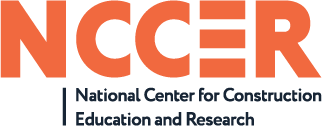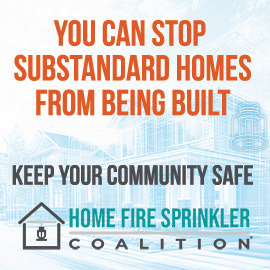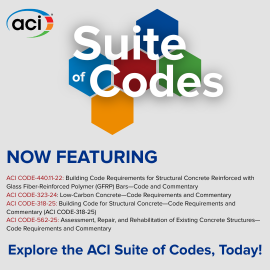All Courses List
If you know exactly what you need and when, these are the lists for you (in date order).
Otherwise, our home page or the links above will guide you through the options by geography and category, along with full descriptions.
- Alabama GAS ONLY Continuing Education (2025) (Self-Paced)
- Alabama Plumbing & Gas Continuing Education (2025) (Self-Paced)
- Alabama PLUMBING ONLY Continuing Education (2025) (Self-Paced)
- CO Plumbing Continuing Education (Fal/Win 2023) (Self-Paced)
- CO Plumbing Continuing Education (Fal/Win 2024) (Self-Paced)
- CO Plumbing Continuing Education (Fal/Win 2025) (Self-Paced)
- CO Plumbing Continuing Education (Spr/Sum 2024) (Self-Paced)
- CO Plumbing Continuing Education (Spr/Sum 2025) (Self-Paced)
- Continuing Professional Education for Texas Plumbers (2023) (Self-Paced)
- Continuing Professional Education for Texas Plumbers (2024) (Self-Paced)
- Continuing Professional Education for Texas Plumbers (2025) (Self-Paced)
- Journeyman/Tradesman Plumber Exam Prep (Self-Paced)
- Medical Gas Continuing Education for Texas Plumbers (Self-Paced)
- Medical Gas Renewal (2021) (Self-Paced)
- Medical Gas Renewal (2024) (Self-Paced)
- Plumbing Apprenticeship Application (Self-Paced)
- Plumbing Apprenticeship, Level 1 (Self-Paced)
- Plumbing Apprenticeship, Level 2 (Self-Paced)
- Plumbing Apprenticeship, Level 3 (Self-Paced)
- Plumbing Apprenticeship, Level 4 (Self-Paced)
- Registered Apprenticeship Compliance Course
- Registered Apprenticeship Compliance Program
- Two Story Dollhouse (Exam Prep) (Self-Paced)
- Continuing Professional Education for Texas Plumbers (2025) (Online Live) - November 10 (9 seats left)
- Fundamentals, Troubleshooting & Repair Bundle, with Practical Skills Scheduled Separately* (Online Live) - November 12 [2 days] (13 seats left)
- Commercial Plumbing Code (S2) [2 Days] (Live In-Person) - Irving, TX, November 13 [2 days] (20 seats left)
- BPAT Practical Skills Refresher (Live In-Person) - San Marcos, TX, November 14 (5 seats left)
- Apprentice Continuing Professional Education (Live In-Person) - Irving, TX, November 15 (12 seats left)
- Backflow Prevention Assembly Tester (BPAT) (Live In-Person) - Irving, TX, November 17 [5 days] (5 seats left)
- Backflow Prevention Assembly Tester (BPAT) (Live In-Person) - San Marcos, TX, November 17 [5 days] (6 seats left)
- BPAT with Practical Skills Refresher (Live In-Person) - Irving, TX, November 17 [4 days] (4 seats left)
- BPAT with Practical Skills Refresher (Live In-Person) - San Marcos, TX, November 17 [4 days] (4 seats left)
- Commercial Plumbing Code (S2) [2 Days] (Online Live) - November 17 [2 days] (17 seats left)
- Continuing Professional Education for Texas Plumbers (2025) - NT (Live In-Person) - Terrell, TX, November 18 (29 seats left)
- Continuing Professional Education for Texas Plumbers (2025) - ET (Live In-Person) - Tyler, TX, November 19 (21 seats left)
- Continuing Professional Education for Texas Plumbers (2025) (Online Live) - November 19 (15 seats left)
- Medical Gas Continuing Education for Texas Plumbers (Online Live) - November 19 (7 seats left)
- BPAT Practical Skills Refresher (Live In-Person) - San Marcos, TX, November 20 (5 seats left)
- BPAT Practical Skills Refresher (Live In-Person) - Irving, TX, November 20 (5 seats left)
- BPAT Practical Skills Exam Only (Live In-Person) - Irving, TX, November 21 (5 seats left)
- BPAT Practical Skills Exam Only (Live In-Person) - San Marcos, TX, November 21 (5 seats left)
- Continuing Professional Education for Texas Plumbers (2025) - GC (Live In-Person) - Houston, TX, November 21 (35 seats left)
- Continuing Professional Education for Texas Plumbers (2025) - GC (Live In-Person) - Missouri City, TX, November 22 (25 seats left)
- Continuing Professional Education for Texas Plumbers (2025) - CT (Live In-Person) - San Antonio, TX, November 22 (20 seats left)
- Continuing Professional Education for Texas Plumbers (2025) (Online Live) - November 24 (18 seats left)
- Backflow Prevention Assembly Tester (BPAT) (Live In-Person) - San Marcos, TX, December 1 [4 days] (14 seats left)
- Backflow Prevention Assembly Tester (BPAT) (Live In-Person) - Missouri City, TX, December 1 [4 days] (5 seats left)
- BPAT with Practical Skills Refresher (Live In-Person) - San Marcos, TX, December 1 [4 days] (5 seats left)
- BPAT with Practical Skills Refresher (Live In-Person) - Missouri City, TX, December 1 [4 days] (5 seats left)
- Continuing Professional Education for Texas Plumbers (2025) (Online Live) - December 2 (22 seats left)
- Continuing Professional Education for Texas Plumbers (2025) (Online Live) - December 4 (22 seats left)
- Residential Code & OSHA (S1) [2 Days] (Live In-Person) - Irving, TX, December 4 [2 days] (29 seats left)
- BPAT Practical Skills Refresher (Live In-Person) - San Marcos, TX, December 4 (5 seats left)
- BPAT Practical Skills Refresher (Live In-Person) - Missouri City, TX, December 4 (5 seats left)
- Medical Gas Continuing Education for Texas Plumbers (Online Live) - December 4 (10 seats left)
- BPAT Practical Skills Exam Only (Live In-Person) - San Marcos, TX, December 5 (5 seats left)
- BPAT Practical Skills Exam Only (Live In-Person) - Missouri City, TX, December 5 (5 seats left)
- Continuing Professional Education for Texas Plumbers (2025) (Online Live) - December 6 (22 seats left)
- Continuing Professional Education for Texas Plumbers (2025) - NT (Live In-Person) - Terrell, TX, December 6 (30 seats left)
- Master Plumber Exam Prep (3 day) (Online Live) - December 8 [3 days] (9 seats left)
- Master Plumber Exam Prep (2 day) (Online Live) - December 9 [2 days] (3 seats left)
- Continuing Professional Education for Texas Plumbers (2025) - CT (Live In-Person) - San Antonio, TX, December 13 (30 seats left)
- Medical Gas Continuing Education for Texas Plumbers (Live In-Person) - San Antonio, TX, December 13 (10 seats left)
- Continuing Professional Education for Texas Plumbers (2025) (Online Live) - December 15 (22 seats left)
- Commercial Plumbing Code (S2) [2 Days] (Live In-Person) - San Marcos, TX, December 16 [2 days] (30 seats left)
- Continuing Professional Education for Texas Plumbers (2025) - NT (Live In-Person) - Terrell, TX, December 16 (30 seats left)
- Continuing Professional Education for Texas Plumbers (2025) - ET (Live In-Person) - Tyler, TX, December 17 (24 seats left)
- Continuing Professional Education for Texas Plumbers (2025) - GC (Live In-Person) - Missouri City, TX, December 17 (29 seats left)
- Residential Code & OSHA (S1) [2 Days] (Live In-Person) - Houston, TX, December 18 [2 days] (30 seats left)
- Continuing Professional Education for Texas Plumbers (2025) - CT (Live In-Person) - San Marcos, TX, December 18 (36 seats left)
- Medical Gas Continuing Education for Texas Plumbers (Live In-Person) - San Marcos, TX, December 18 (10 seats left)
- Continuing Professional Education for Texas Plumbers (2025) - GC (Live In-Person) - Houston, TX, December 20 (40 seats left)
Contact Us
We’re here to help you with any questions you have about Contractor Training at the Code Council.
Email contractortraining@iccsafe.org or call 855-899-4667.






 The Texas Education Agency (TEA) requires Texas high school students enrolled in various Career & Technical Education (CTE) programs to receive industry-based certifications as a significant component of the state’s school accountability program.
The Texas Education Agency (TEA) requires Texas high school students enrolled in various Career & Technical Education (CTE) programs to receive industry-based certifications as a significant component of the state’s school accountability program.

